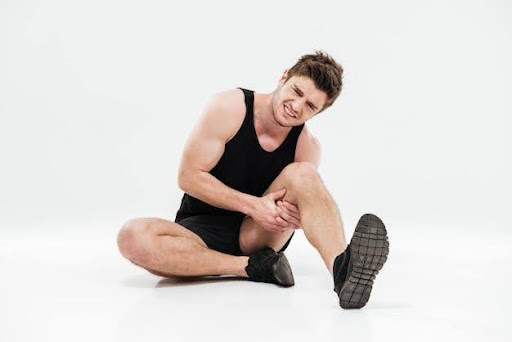Vessel Ablation And Sclerotherapy - Two Very Effective Treatments For Leg Cramps
In simple terms, leg cramps are involuntary contractions of the muscles in the legs, often leading to sharp pain. They can last anywhere from a few seconds to several minutes.
Author:Michael RachalReviewer:Finn WildeOct 18, 202419.3K Shares379.9K Views

Leg cramps can be frustrating and painful, affecting individuals of all ages. They can occur at any time, whether you're sleeping, sitting, or exercising.
In simple terms, leg cramps are involuntary contractions of the muscles in the legs, often leading to sharp pain. They can last anywhere from a few seconds to several minutes.
While occasional leg cramps are usually not a cause for concern, frequent or severe cramps can disrupt daily life. However, there are treatments for leg cramps and charley horses.
In this article, we will delve into the two main treatments for leg cramps. These treatments are:
- Vessel Ablation
- Sclerotherapy
Let us dive deeper:
Vessel Ablation - An Overview
Vessel ablation is a minimally invasive procedure for treating varicose veins and improving blood flow in the legs. This technique utilizes laser energy to close off malfunctioning veins, redirecting blood to healthier vessels.
By addressing venous insufficiency, vessel ablation can alleviate symptoms such as leg cramps, swelling, and pain.
The Procedure
The vessel ablation procedure typically begins with a consultation, during which a healthcare provider assesses the patient’s condition. This diagnosis is mainly made through an ultrasound examination.
Once a diagnosis is made, the following steps are involved:
- Anesthesia: Local anesthesia is administered to numb the area around the affected vein.
- Catheter Insertion: A thin catheter is inserted into the problematic vein through a small incision.
- Laser Energy Application: Laser energy is delivered through the catheter, effectively sealing the vein.
- Post-Procedure Care: Patients can usually return to their daily activities shortly after the procedure, with minimal downtime.
Benefits Of Vessel Ablation
- Minimally Invasive: Unlike traditional surgical methods, vessel ablation requires only tiny incisions, leading to less pain and faster recovery times.
- Quick Recovery: Most patients can resume normal activities within a day or two.
- Effectiveness: Studies show that vessel ablation significantly reduces symptoms of venous insufficiency, including leg cramps.
- Improved Quality of Life: Many patients report enhanced mobility and reduced discomfort after the procedure.
Sclerotherapy - A Closer Look
Sclerotherapyis another effective treatment for varicose veins and associated leg cramps. This technique involves injecting a sclerosing solution directly into the affected veins.
This causes them to collapse and fade from view. Like vessel ablation, sclerotherapy addresses venous insufficiency, alleviating symptoms such as cramps and swelling.
The Procedure
Sclerotherapy is relatively straightforward and typically involves the following steps:
- Consultation: A healthcare provider evaluates the patient’s condition and determines if sclerotherapy is appropriate.
- Injection: The sclerosing solution is injected into the targeted vein using a fine needle.
- Compression: After the injection, compression bandages or stockings are applied to help the veins collapse and promote healing.
Benefits Of Sclerotherapy
- Non-Surgical: Sclerotherapy does not require anesthesia or incisions, making it a less invasive option.
- Minimal Discomfort: Patients often experience only mild discomfort during the injection.
- Effective Results: Many patients notice significant improvement in symptoms within weeks of treatment.
- Cosmetic Improvement: Sclerotherapy also offers cosmetic benefits, reducing the appearance of varicose veins.
Comparing Vessel Ablation And Sclerotherapy
Both vessel ablation and sclerotherapyare effective treatments for leg cramps related to venous insufficiency. However, they each have distinct advantages:
- Vessel Ablation: Ideal for more prominent veins or cases of significant venous insufficiency. It offers a more permanent solution by closing off the affected vein completely.
- Sclerotherapy: Best suited for smaller veins and spider veins. It’s often preferred for its non-invasive nature and quick recovery.
Choosing The Right Treatment
Selecting between vessel ablation and sclerotherapy depends on various factors, including:
- The severity of the venous condition
- The size of the affected veins
- Patient preference.
A thorough consultation with a vascular specialist is crucial to determining the best approach for individual needs.
Conclusion
Leg cramps can significantly impact your quality of life, primarily when associated with venous insufficiency. Vessel ablation and sclerotherapy are two highly effective treatments that address the root causes of these cramps. In turn, this offers relief and improves overall vascular health.

Michael Rachal
Author
Michael Rachal believes that luxury lies in the details. With over 20 years of experience in the luxury travel industry, he has crafted hundreds of bespoke itineraries for clients seeking personalized, unforgettable experiences.
Whether guiding clients through private cultural tours or curating culinary journeys with world-renowned chefs, Michael ensures that each trip is tailored to perfection.
His ability to anticipate needs and exceed expectations has earned him a reputation as a leading expert in luxury travel.

Finn Wilde
Reviewer
For Finn Wilde, the wilderness is more than just a destination - it’s a way of life. Over the past decade, he has led multiple expeditions in some of the world’s most remote regions, from the icy fjords of Greenland to the rugged trails of Patagonia.
Finn emphasizes sustainability in all of his adventures, helping participants connect with nature while promoting responsible exploration. His expeditions inspire individuals to explore the great outdoors while fostering a deep respect for the environment.
Latest Articles
Popular Articles